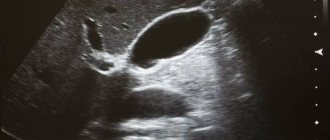Meleshkina Angelina Valerievna
Pediatrician, Candidate of Medical Sciences, Associate Professor
Parents hear “lactase deficiency.” What it is? How does it manifest itself? How is it diagnosed? What to do with it? What about breastfeeding? What are lactose-free formulas and when are they needed? How should complementary foods be administered to children with lactase deficiency? We will try to answer these questions and analyze
What is lactose?
Lactose is a carbohydrate. Lactose makes up more than 90 percent of all carbohydrates found in dairy products, which is why it is often called milk sugar. Accordingly, lactose is the main carbohydrate in human milk. It is also present in modern adapted milk formulas.
Why is lactose needed?
- The main source of energy in the baby's body.
- Important for the maturation and normal functioning of the central nervous system, nerves, vision, and joints.
- The substances formed as a result of its breakdown contribute to the formation of beneficial intestinal microflora, the synthesis of vitamins, and the absorption of calcium, magnesium, and manganese. A small amount of undigested lactose normally enters the large intestine, where it contributes to proper intestinal motility and protection from pathogenic and opportunistic microorganisms.
- I would also like to note that the lactose in human milk is different from the lactose in cow's milk. Human milk contains β-lactose, while cow's milk contains predominantly α-lactose. β-lactose, unlike α-lactose, helps the proliferation of beneficial bifidobacteria and the absorption of calcium, magnesium and zinc.
Pathogenesis
The basis of enzyme deficiency in the body - lactase deficiency - is a malabsorption of milk sugar and poor tolerance to dairy foods ( lactose intolerance ).
In case of insufficiency of function and reduced activity of lactase, milk sugar does not undergo breakdown, remaining unchanged in the intestine. There it begins to bind water, which causes diarrhea, and as a result of the activity of intestinal bacteria, fermentation of milk sugar occurs and bloating occurs.
Normal digestion and lactose intolerance
What is lactase deficiency?
The breakdown of the lactose molecule into its component parts occurs in the small intestine. This process requires a special enzyme - lactase.
Lactase deficiency is a disorder that develops as a result of a decrease in the amount or activity of the lactase enzyme.
There are two types of lactase deficiency - primary (congenital and transient/temporary) and secondary (acquired).
Primary (congenital) lactase deficiency.
This is a hereditary, genetic anomaly. This feature is detected on average in 5–6 percent of the world’s population, in some regions less, in others more. It is characterized by a deficiency of the lactase enzyme in the presence of normal, intact intestinal mucosa. The reason for this is a congenital gene mutation. Children with this condition will not tolerate lactose throughout their lives.
Primary (transient) lactase deficiency.
Most often, parents of infants encounter this problem. As a rule, it occurs in children who are premature or immature at the time of birth. The fact is that during intrauterine development, the ability of the child’s intestines to produce the enzyme lactase increases gradually, reaching a maximum at the time of birth. This means that babies born prematurely produce less lactase than children born at term. However, the lack of lactase will not be permanent, but temporary (transient).
As the child grows and develops, his gastrointestinal tract will mature, and accordingly, both the production and activity of the enzyme will increase. Usually by 3-4 months the amount and activity of the enzyme reaches normal, and the symptoms of lactase deficiency gradually disappear.
Factors that negatively affect the production of lactase in a baby, in addition to prematurity, are also: chronic placental insufficiency during pregnancy, the threat of its termination, other complications of pregnancy, as well as a separate stay in the maternity hospital from the mother, and early weaning.
Secondary (acquired) lactase deficiency.
Develops with any intestinal diseases, both infectious and non-infectious. Damage to intestinal cells (enterocytes) leads to a decrease in lactase synthesis. As a result, lactase deficiency develops. Usually this phenomenon is temporary; when the pathological process subsides, enzyme synthesis is restored.
In infants and young children, secondary lactase deficiency can occur against the background of intestinal infections of both viral and bacterial origin. In these cases, there is both direct damage to intestinal cells by an infectious agent and the development of a subsequent disturbance in the composition of the microbiota in it (the so-called dysbiosis).
Giardiasis is also a common infection among children, especially those aged 1 to 4 years. With giardiasis, the process of lactose breakdown is disrupted.
The presence of a pronounced disturbance of the intestinal microflora in itself, regardless of intestinal infection, can provoke the development of lactase deficiency.
Disturbance of the microflora is observed, for example, as a result of taking antibiotics. Also, disruption of the intestinal microbiota is associated with allergic processes.
True celiac disease (celiac disease) is a rare disease in which the villi of the small intestine are damaged by foods containing gluten. With celiac disease, the amount of all enzymes, including lactase, decreases in the small intestinal mucosa.
Classification
It is customary to distinguish between primary (hereditary) lactase deficiency and secondary – arising against the background of a general state of enzymatic immaturity. In addition, it can be malignant - with lactosuria and benign - without such a pathological manifestation.
Primary lactase deficiency
Primary - true lactase deficiency is a congenital lactase deficiency, which manifests itself from the first days of life and occurs in approximately 10% of the world's population. The pathology differs in family history - usually at least one adult relative is diagnosed with dairy intolerance, for example, parents, grandparents, and brothers and sisters.
Secondary lactase deficiency
Secondary lactase deficiency is characterized by intestinal dysbiosis and immaturity of the pancreas. Secondary pathology is usually detected in children under 1 year of age or in older adults due to intestinal trauma. At the same time, to eliminate it, it is enough to correct dysbiosis , which promotes normal absorption in the future, although there are known cases of transient (transient) pathology that develops with age.
The mechanism of development of lactase deficiency.
If lactose is not digested for some reason, it accumulates and enters the large intestine in excess quantities. In the large intestine, lactose attracts water, which leads to the formation of loose stools. It also becomes a substrate for the excessive growth of various bacteria living in the intestines, including lactic acid bacteria, which is the cause of the sour smell of stool in lactase deficiency. The fermentation process is activated, during which bacteria decompose lactose into water and gases. Water further thins the stool. The resulting gases fill the intestinal loops, stretching it, causing flatulence and abdominal pain.
What are the symptoms of lactase deficiency in infants?
Symptoms of lactase deficiency in infants are:
- loose stools;
- painful bloating;
- poor weight gain.
Loose stools
Normally, children in the first months of life have stools on average 5-7 times a day, mushy, homogeneous.
With lactase deficiency, the stool becomes liquid and often foamy. On diapers you may see a thicker part surrounded by a wet spot ("fractional stool"). Lumps may be visible. At the same time, some children experience constipation or rare stools, but after stimulation (tummy massage, warm bath), stool may appear, but it will still be liquid and foamy. Painful bloating
Due to increased gas production, the loops of the baby's delicate small intestine are stretched, so the tummy is swollen, a little tense and painful.
Sometimes you can hear rumbling. Typically, these symptoms appear or worsen 15-30 minutes after feeding, as do infant colic, the contribution of lactase deficiency in the development of which is very likely in some children. All this causes anxiety and crying of the child. Sometimes the baby may start crying, throwing up the breast, or arching during the feeding process. Sleep is disturbed: on the one hand, due to abdominal pain, on the other – poor satiety and feelings of hunger. Poor weight gain
Weight gain is the most important indicator of a child's development in the first months and years of life. On average, in the first half of the year, a child normally gains 600-800 g per month, but the minimum monthly increase should be no less than 500 g. By the end of the first year of life, on average, the baby should weigh about 10-11 kilograms. With lactase deficiency, the child’s weight may “stand still”, which is a reason to contact a pediatrician.
In severe cases of lactase deficiency, the child loses weight, and constant loose stool (diarrhea) leads to dehydration of the baby's body. Dry skin, lethargy of the baby, a small amount of urine are alarming symptoms, and if they appear, you should immediately consult a doctor.
Causes
Complete absence of lactase activity (alactasia) is a fairly rare and severe autosomal recessive disorder that develops as a result of a mutation in the LCT gene of chromosome 21 with a genetically determined decrease in lactase activity.
The development of secondary lactose intolerance can be facilitated by damage to the small intestine after viral gastroenteritis, giardiasis , celiac disease and Crohn's disease , as well as prematurity and immaturity of intestinal enterocytes in newborns.
How to diagnose lactase deficiency?
Only a doctor can diagnose lactase deficiency. It is based on:
- analysis of complaints, symptoms;
- baby examination data;
- laboratory data.
Stool analysis for carbohydrates. To confirm the diagnosis, laboratory diagnostics are performed. There are several methods, but stool analysis for carbohydrates is widely used in infants.
- Normally, the content of total carbohydrates in a child’s feces should not exceed 0.25 percent.
- With values from 0.25 to 0.50 percent, the decision on the tactics of managing the child is made individually.
- At values of 0.50 percent and above, therapeutic measures are usually required.
Chromatographic analysis. A simple stool carbohydrate test does not determine which carbohydrates are present in the test. Therefore, in difficult cases, an additional chromatographic analysis is performed to determine the lactose content in the stool.
- In infants, this figure should not exceed 0.07 percent,
- In older children it should be completely absent.
Coprogram. This is an additional study of stool composition. In this analysis, a decrease in pH less than 5.5 in children indirectly speaks in favor of lactase deficiency.
Genetic testing is carried out in cases of suspected congenital lactase deficiency.
How is lactase deficiency treated?
Lactase deficiency is treated by a pediatrician.
IMPORTANT!
If the child is breastfed, then reducing the amount of breast milk in the diet is extremely undesirable.
Correction of feeding technique.
Failure to comply with feeding techniques is sometimes to blame for the development or intensification of transient lactase deficiency. The fact is that the amount of lactose in breast milk differs at the beginning and at the end of feeding. Breast milk is conventionally divided into “front” and “hind”. Foremilk accumulates in the mammary glands between feedings and contains more lactose and water. Hind milk contains mainly fats and little lactose. If a mother has a lot of milk and she changes breasts during one feeding, without waiting for the baby to empty it completely, she gets an “overload” of lactose. To prevent this condition, you should wait until the baby has eaten all the milk from one breast, and then, if necessary, apply it to the other.
Dairy-free diet for mother with breastfeeding
Mom especially needs to avoid plain milk. There is no need to be afraid of a lack of calcium - there is a lot of it in other foods: fish, sesame, greens, etc., but you need to remember that the body needs vitamin D to absorb calcium. Nutrition should remain complete and balanced. The reintroduction of dairy products into the mother’s diet is allowed when the child’s symptoms subside; the introduction should begin with fermented milk products.
We carefully select industrial products. We study the label - milk sugar is included in many industrially prepared products: sausages, ham, preserves and jams, instant soups and purees, biscuits, cakes, many sauces, bouillon cubes, fast food, chocolate, etc. Lactose is also often a “filler” for various medications. They should also be excluded from your diet.
Elimination of foods that cause increased gas formation : simple sugars, black bread, grapes, white cabbage, etc.
Pharmacological correction
consists of prescribing lactase drugs to a child. When lactase is added, milk is fermented in advance. The drug is dissolved in a small amount of breast milk and given to the baby at the beginning of feeding, possibly from a spoon. The required dosage of the drug, frequency and duration of administration is determined by the pediatrician. In some cases, your doctor may prescribe other enzyme preparations.
Correction of baby's nutrition during breastfeeding
In rare cases, if there is no effect from the use of the enzyme, with very poor weight gain, significant severity of symptoms, the doctor makes an individual decision to reduce the lactose load by replacing from 1/3 to 2/3 of the volume of food at each feeding with low-lactose or lactose-free milk formula, supplemented with breast milk. These mixtures are introduced into the diet gradually, at each feeding, bringing to the required amount over 3-5 days, aimed at reducing flatulence, restoring normal stool consistency and stool frequency, and normalizing stool analysis for carbohydrates. Typically, the volume of a low/lactose-free product is 30-60 ml per feeding. The duration of this regimen is determined individually by the pediatrician; in the future, attempts should be made to restore full breastfeeding as much as possible . It must be remembered that in the case of primary transient lactase deficiency, by approximately the age of 3-4 months, the child’s own lactase production usually increases, and the symptoms weaken significantly or go away completely.
Correction of a baby’s nutrition on IV
If the child is bottle-fed, the formula is selected with the maximum amount of lactose that does not cause the appearance of clinical symptoms and an increase in carbohydrates in the feces (the maximum possible for a given baby). If the child's condition allows, you can start with a diet containing up to ⅔ carbohydrates in the form of lactose. This ratio can be achieved by combining a regular adapted mixture with a low- or lactose-free one. Mixtures are selected according to the recommendation of a pediatrician. It is possible to prescribe fermented milk mixture. If a combination of mixtures is used, they must be distributed evenly throughout the day, i.e. For each feeding, for example, 30 ml of a low-lactose mixture and 90 ml of a regular adapted mixture are given. The child’s condition is monitored, after 7-10 days the stool test for carbohydrates must be repeated, after which a decision is made to correct the diet. If there is a pronounced lactase deficiency and there is no effect from combining the mixture, the baby is transferred to low-lactose mixtures as the main diet. The duration of such nutrition is also individual.
Important! Lactose-free mixtures are labeled “SL” (sine lactose) or “LF” (lactose free). Low lactose mixtures can be labeled “LL (low lactose).
Correction of nutrition for secondary lactase deficiency
For example, after an intestinal infection, it is not fundamentally different from the management of breastfed and bottle-fed children; in general, it is similar: limiting the intake of lactose from the diet, enzyme preparations, restoring normal intestinal biocenosis; in some cases, selection and temporary partial or complete replacement of the mixture with a low- or lactose-free one is required. Children need to be provided with such a diet until symptoms subside and their condition improves. After 1 – 3 months, they begin to introduce food containing lactose, observing the body’s reaction.
Correction of nutrition in cases of impaired digestion and absorption of other nutrients
If the child also has signs of a severe disturbance in the digestion and absorption of nutrients, in particular fats (unstable stool, lumps, mucus), the baby is not gaining weight well, then the pediatrician can prescribe lactose-free mixtures based on protein hydrolysates with the addition of medium-chain triglycerides, which promote good health. weight gain .
IMPORTANT! In the case of the primary congenital form of lactase deficiency, diet therapy with a reduction or complete exclusion of dairy products should become a way of life.
How are complementary foods introduced to children with lactase deficiency?
- Complementary feeding is prescribed at the usual time (4.5-6 months), but for children with low weight and poorly resolving lactase deficiency, it may be preferable to prescribe complementary feeding a little earlier - from 4-4.5 months.
- For babies with a tendency to loose stools, it is advisable to prescribe the first complementary feeding with dairy-free porridge (rice, buckwheat), which, when artificially fed, can be diluted with a lactose-free mixture.
- If there is a tendency to constipation, the first complementary feeding is vegetable puree with coarse vegetable fiber (first zucchini, cauliflower, later pumpkin, etc.) with the addition of vegetable, preferably olive, oil.
- Meat puree is prescribed from 5.5-6 months.
- Fruit purees (without cream) can also be introduced from 5-6 months. They are introduced carefully, starting with the least sweet fruits, because... fructose causes gas formation.
- In the second half of life, it is possible to gradually introduce fermented milk products with a reduced lactose content - butter, cottage cheese washed from whey, three-day kefir (from 8 months).








